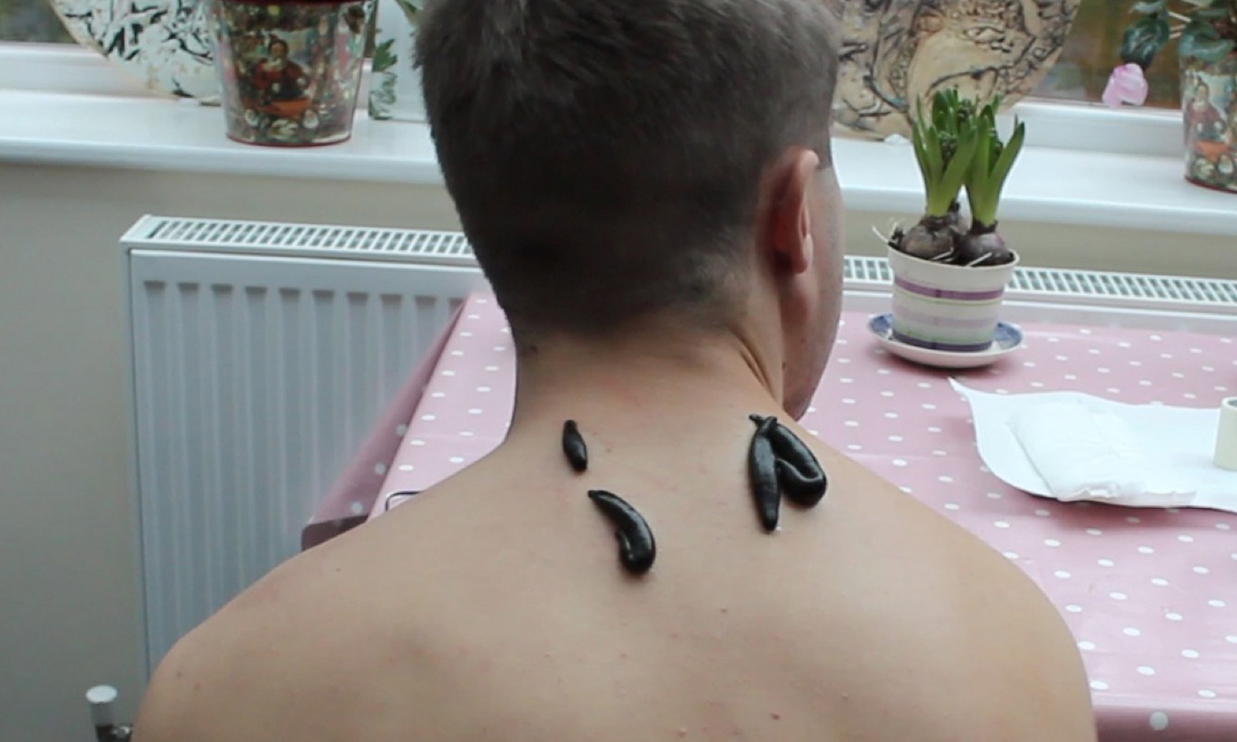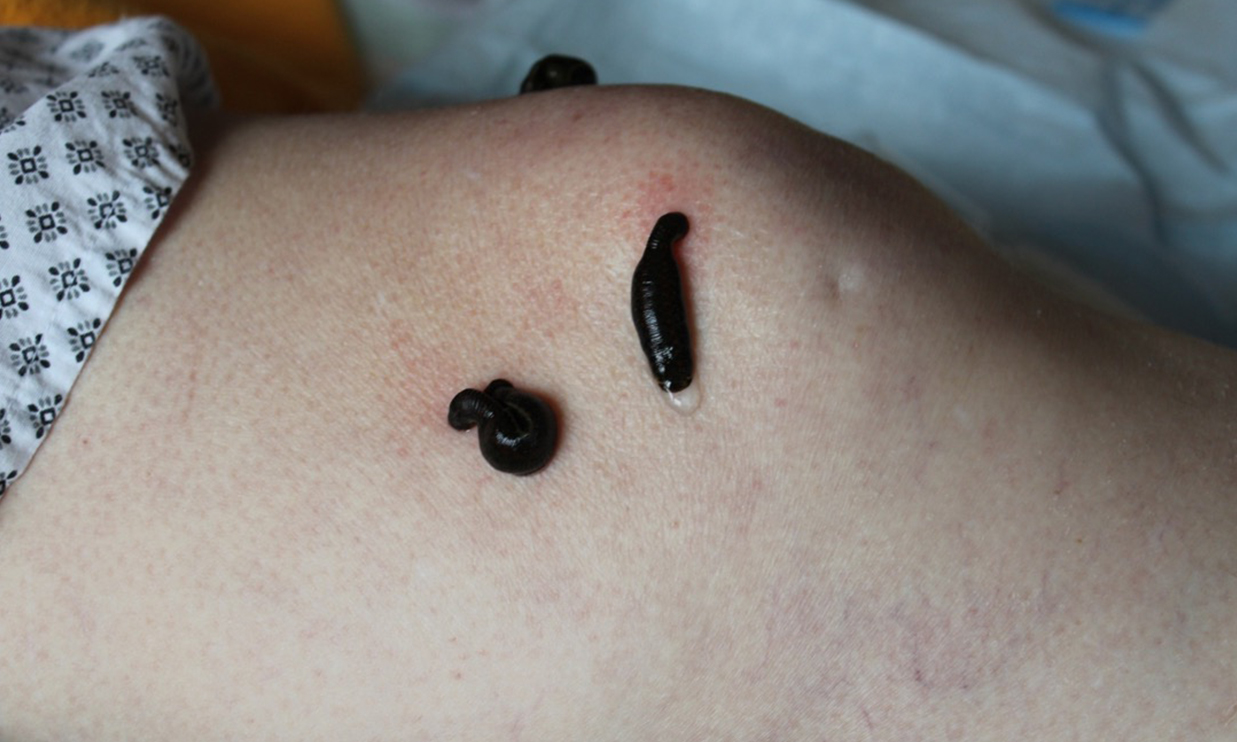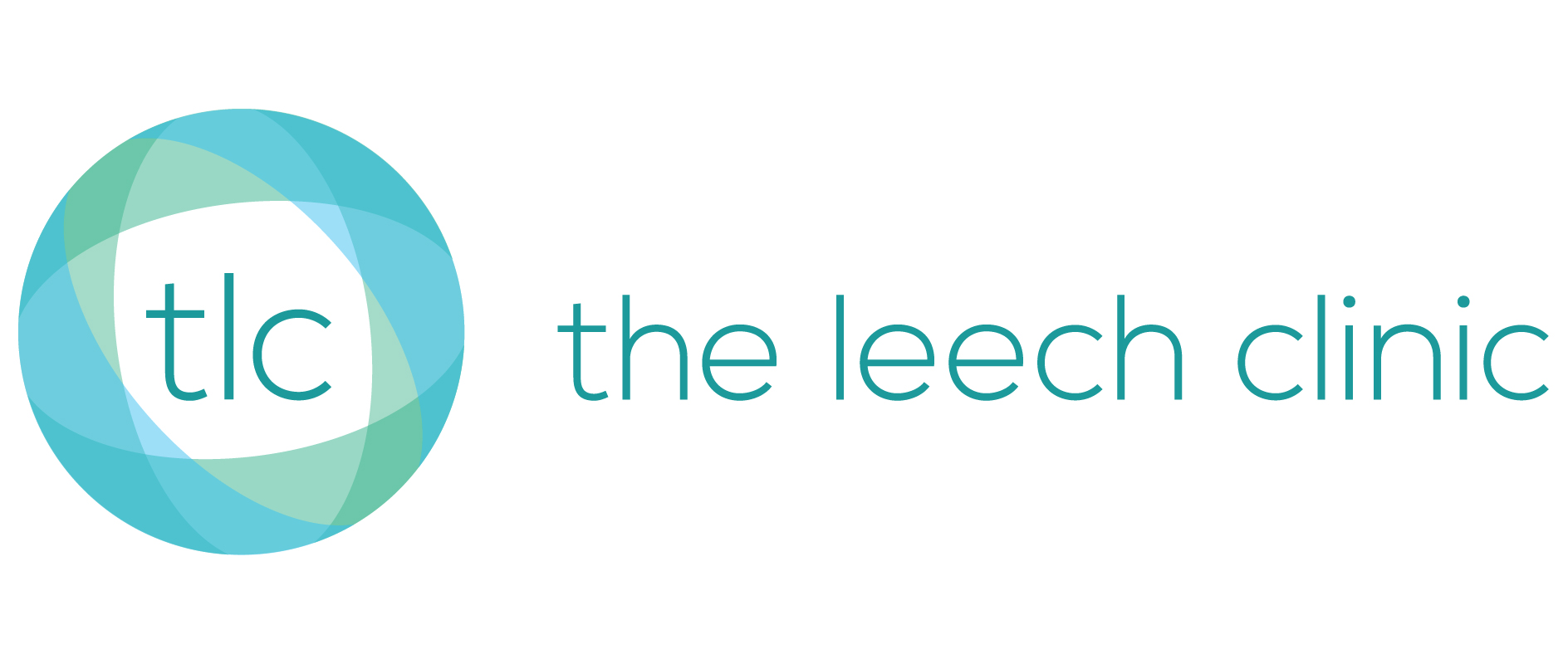What is leech therapy?
Leech therapy (also known as hirudotherapy) is a natural, safe treatment which utilises the healing properties of leeches. The healing properties of leeches have been known for hundreds of years. Leeches were used during medieval times because they were known to heal infections, before antibiotics were discovered.
In the last 20 years leeches have been rediscovered, and are scientifically better understood. Leech therapy has never gone out of use to treat a myriad of disorders and enhance wellbeing in the Middle East and in Eastern Europe, for example Poland, Germany, Russia and the Ukraine.
As more people in other European countries have rediscovered the remarkable healing properties of leeches, there has been a huge resurgence in hirudotherapy and it is now also practised in USA, New Zealand and Australia.



How does leech therapy work?
The principal mechanism of action in leech therapy appears to be the secretion of a complex mixture of biologically active substances from the salivary glands of the leech at the time of biting, and the injection of these active substances into the animal host. (Michalsen 2008)
When feeding, leeches secrete anticoagulant and vasodilatory agents (antiplatelet agents and factor Xa inhibitors) which allow blood to flow freely to the site, once the leech is detached

In addition, leeches secrete analgesic compounds into the site of attachment, along with various anti-inflammatory agents (fibrinolytic enzymes, collagenase, hyaluronidase). These serve to further promote healing.
Other bioactive substances secreted by leeches include bactericidal and bacteriostatic agents.
FREQUENTLY ASKED QUESTIONS
What are leeches?
Leeches belong to the phylum Annelida (segmented invertebrates), class Hirudinea. Three leech species, Hirudo medicinalis, Hirudo verbena and Hirudo orientalis have been widely used in Europe as therapy, to treat a variety of ailments.
Leeches live in ponds and rivers. They normally feed on decaying plant material. Before reproducing, they will take a single blood meal, usually from a passing mammal. The bite is almost painless, since while feeding, the leech injects a naturally-produced local anaesthetic.
Leeches have the ability to expand or contract their bodies. At a single meal, a leech ingests several times its own weight of blood. When it is replete (usually after about half an hour), it falls off the host, and then ‘rests’ for up to 6 months.





